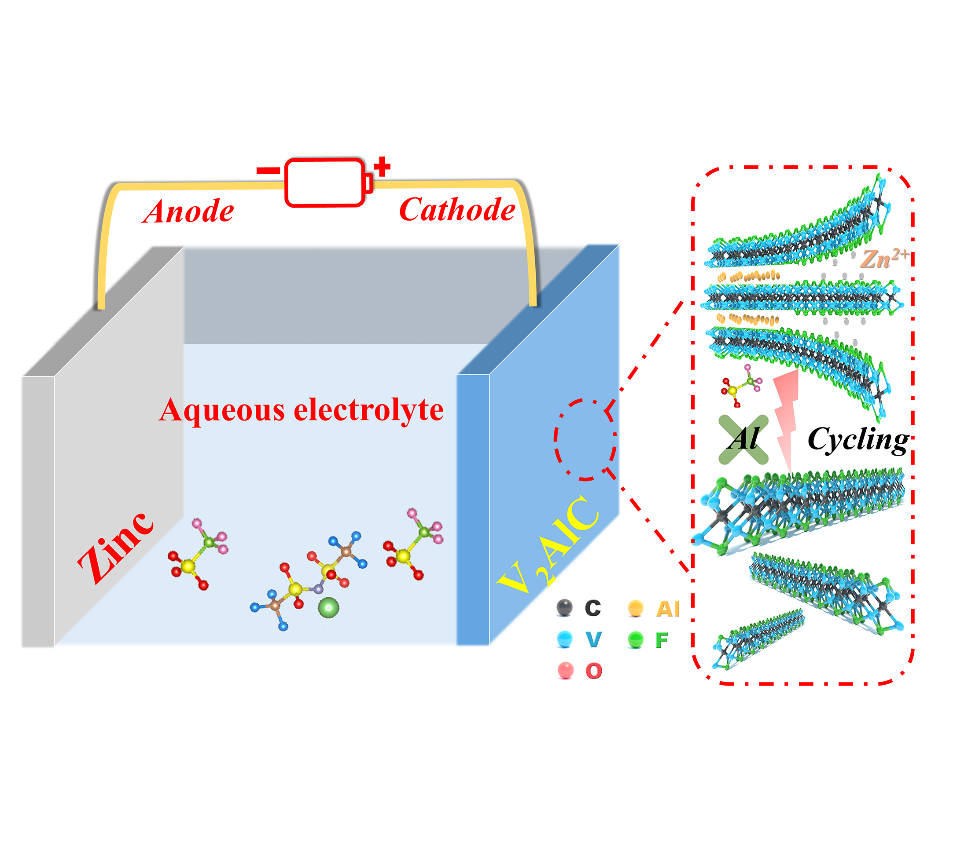AEnM: Electrochemical preparation of MXene with acid-free etchant and its efficient zinc storage
QQ Academic Group: 1092348845
Detailed
In the past ten years, the layered MXene material has become a rising star in the two-dimensional material family, which is widely used in liquid crystal, catalysis, sensing, nano-generator, electromagnetic shielding and other fields. With its own unique layered structure, amazing electronic conduction, and rich surface chemistry, MXene has shown great potential in the field of energy storage, which can accommodate efficient shuttles of various ions including metals and non-metals. However, due to the defects of the existing preparation process and the use of acid-base etchants, the preparation of MXene-based energy storage devices (etching of MXene, electrode preparation, and device assembly) is cumbersome and inevitably brings pollution. In addition, during electrode preparation, the spontaneous agglomeration of two-dimensional materials will undoubtedly damage its subsequent electrochemical performance.

In view of this, Professor Chunyi Zhi of the City University of Hong Kong and researcher Huang Qing from Ningbo Institute of Materials have aimed at this problem, directly using MAX precursors as raw materials and using in-situ electrochemical etching to integrate this process into one step, and proposed a method A feasible all-in-one efficient solution. The research team used fluorine-containing water-based high-concentration salts as both electrolyte and etchant, and gradually removed the Al layer in MAX through an electrochemical cycle process, and obtained MXene sheets in-situ in the electrode. The whole process is carried out in a closed battery system, which exchanges materials with the outside world, which is efficient and environmentally friendly. After etching, the entire battery system can continue to work as usual, and the resulting MXene sheet layer directly serves as a new generation of active materials to show more excellent electrochemical performance. MXene nanosheets exhibit a metastable state in an aqueous environment. The exposed transition metal layer is easily oxidized under voltage application. At the same time, with the change of phase and morphology, it gradually turns to the corresponding oxide during the cycle. Transformation, and finally get V2O5/C/V2O5/C/V2O5 type sandwich stack structure. Thanks to this, MXene is no longer limited to the pseudocapacitive properties of the surface, and the electrochemical activity of the transition metal layer is fully activated. As the battery cycle progressed, the capacity did not gradually decay, but showed a clear upward trend, completely different from previous reports. Related results were recently published on Advanced Energy Materials (DOI: 10.1002/aenm.202001791).
Information source: MaterialsViews
This information is from the Internet for academic exchanges. If there is any infringement, please contact us and delete it immediately
- Previous: Tsinghua University SI
- Next: MXene breakthrough: Na


 mxene academic
mxene academic
